Archives
- By thread 5193
-
By date
- June 2021 10
- July 2021 6
- August 2021 20
- September 2021 21
- October 2021 48
- November 2021 40
- December 2021 23
- January 2022 46
- February 2022 80
- March 2022 109
- April 2022 100
- May 2022 97
- June 2022 105
- July 2022 82
- August 2022 95
- September 2022 103
- October 2022 117
- November 2022 115
- December 2022 102
- January 2023 88
- February 2023 90
- March 2023 116
- April 2023 97
- May 2023 159
- June 2023 145
- July 2023 120
- August 2023 90
- September 2023 102
- October 2023 106
- November 2023 100
- December 2023 74
- January 2024 75
- February 2024 75
- March 2024 78
- April 2024 74
- May 2024 108
- June 2024 98
- July 2024 116
- August 2024 134
- September 2024 130
- October 2024 141
- November 2024 171
- December 2024 115
- January 2025 216
- February 2025 140
- March 2025 220
- April 2025 233
- May 2025 239
- June 2025 303
- July 2025 4
-
The week in charts
the Daily read
Consumer interest in sustainable packaging, digital-attacker brands, and more .
Share this email 



ALL THE WEEK’S DATA THAT'S FIT TO VISUALIZE 
Our Charting the path to the next normal series offers a daily chart that helps explain a changing world—during the pandemic and beyond. In case you missed them, this week’s graphics explored which consumers are most willing to pay more for sustainable packaging in packaged food, how telcos are addressing customers’ changing demands, how adequate investment in machine intelligence can significantly improve factories’ KPIs, the shift in treatment for Medicare beneficiaries from in-person facilities to care at home, and why B2B companies are hedging their bets on omnichannel sales. FEATURED CHART Paper or plastic? 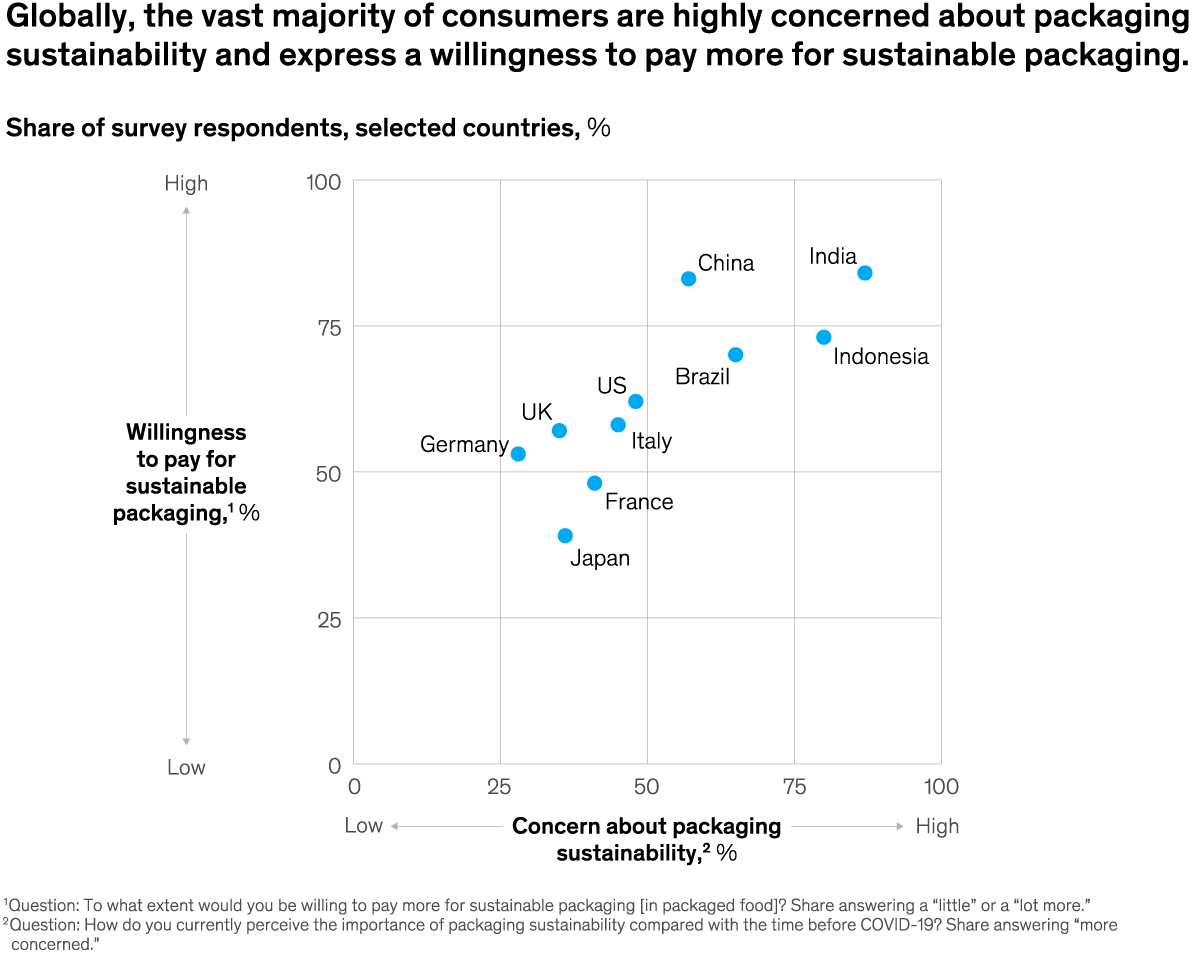
See more 



This week’s other select charts Digital attackers bring it on The latest word in industrial efficiency Outpatient care without leaving the couch B2Bs seize the right sales mix 

Follow our thinking 



Share these insights Did you enjoy this newsletter? Forward it to colleagues and friends so they can subscribe too.
Was this issue forwarded to you? Sign up for it and sample our 40+ other free email subscriptions here.This email contains information about McKinsey’s research, insights, services, or events. By opening our emails or clicking on links, you agree to our use of cookies and web tracking technology. For more information on how we use and protect your information, please review our privacy policy. You received this email because you subscribed to The Week in Charts newsletter. Manage subscriptions | Unsubscribe Copyright © 2022 | McKinsey & Company, 3 World Trade Center, 175 Greenwich Street, New York, NY 10007
by "McKinsey Week in Charts" <publishing@email.mckinsey.com> - 03:28 - 5 Mar 2022 -
How the best CEOs lead
McKinsey&Company
Plus, the path to a resilient postpandemic recovery .
Share this email 



Monthly Highlights, March 2022 When you’re the captain of a ship, both the vessel and the voyage rest on your shoulders—whether the water is calm or rough. The same is true for CEOs, and, invariably, a crisis will call for course correcting, recovery, and learning. This month, our featured stories offer leadership lessons from 67 CEOs of some of the world’s most successful companies and lay out the shared character traits that enable the best leaders to navigate inevitable storms. Other highlights in this month’s issue include the following topics: - the necessary shift from defensive measures and short-term goals to a sustainable, inclusive growth agenda
- lessons leaders can take from the yearslong pandemic to garner more success in 2022
- the potential of FemTech to help better match resources, talent, and capital to women’s unmet health needs
- how B2B companies can shift share meaningfully through greater orchestration, integration, and personalization
Editor’s choice 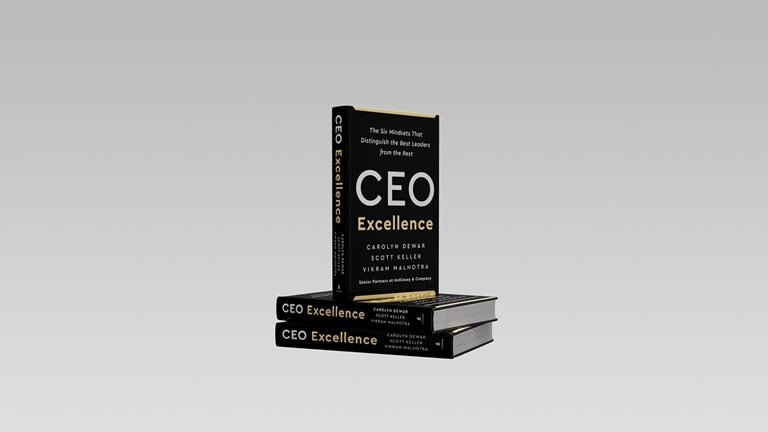

Leadership lessons from the world’s best CEOs The authors of the new book CEO Excellence, who interviewed dozens of the top-performing chief executives, share their most memorable encounters and stories. Get the scoop 





How to be an excellent CEO The best CEOs in the world embrace six mindsets. Find out what they are in this video series. Watch now 




THIS MONTH’S HIGHLIGHTS 
Three keys to a resilient postpandemic recovery The path to sustainable, inclusive growth lies in building resilience now. Look to the future 
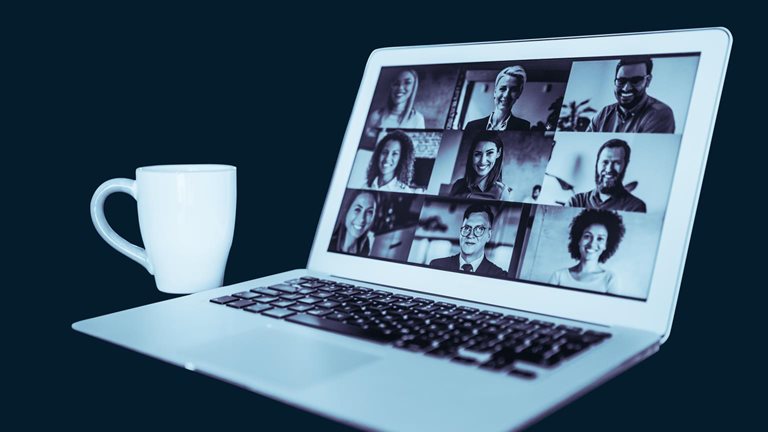
Back and forth: COVID-19’s impact on business in 2021—and today The years-long pandemic persists. How can companies continue to adapt? Think ahead 

The dawn of the FemTech revolution As opportunities in women’s health accelerate, FemTech is helping to match capital and talent to unmet needs—with promising early results. Break new ground 
The new B2B growth equation Customers want an always-on, personalized, omnichannel experience. The world’s best sellers are giving it to them. Shift share meaningfully 

To improve your supply chain, modernize your supply-chain IT Global distribution issues and increasingly complex supply chains are forcing companies to modernize the tools they use for forecasting demand and planning how to meet it. Get with the times 

Creating value, finding focus: Global Insurance Report 2022 The insurance industry struggles to create economic profit. But amid COVID-19’s enduring changes, opportunities await. Read the full report 

SPECIAL FEATURES 
McKinsey for Kids This interactive series tells stories about our work to help you understand what McKinsey does and why it matters, whether you’re 16 or 64. Get smart 

The Next Normal Leading executives and McKinsey experts conjure the future, one industry at a time. Explore all editions 

McKinsey on Books Explore this month’s best-selling business books, prepared exclusive by NPD BookScan. See the lists 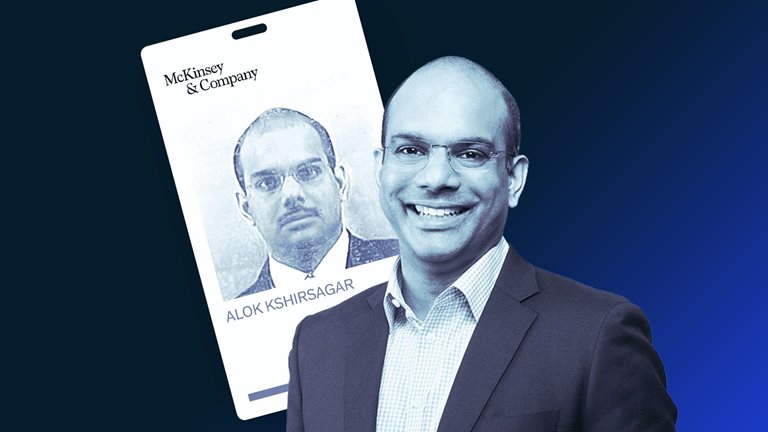
My Rookie Moment McKinsey senior colleagues share their formative early-career experiences to help you navigate yours. Watch episode 6 

McKinsey Classics Scenario planning can broaden the mind but can fall prey to the mind’s inner workings. Learn how to control them with “Overcoming obstacles to effective scenario planning.” Rewind 
Readers & Leaders Read a sample of Readers & Leaders and sign up for it or any of our more than 40 free email subscriptions. Subscribe — Curated by Eleni Kostopoulos, a digital publishing manager in McKinsey’s New York office 

Follow our thinking 


McKinsey Insights - Get our latest
thinking on your iPhone, iPad, or Android


Share these insights Did you enjoy this newsletter? Forward it to colleagues and friends so they can subscribe too.
Was this issue forwarded to you? Sign up for it and sample our 40+ other free email subscriptions here.This email contains information about McKinsey’s research, insights, services, or events. By opening our emails or clicking on links, you agree to our use of cookies and web tracking technology. For more information on how we use and protect your information, please review our privacy policy. You received this email because you are a registered member of our Monthly Highlights newsletter. Manage subscriptions | Unsubscribe Copyright © 2022 | McKinsey & Company, 3 World Trade Center, 175 Greenwich Street, New York, NY 10007
by "McKinsey Highlights" <publishing@email.mckinsey.com> - 11:23 - 5 Mar 2022 -
Author Talks: Forge your power
the Daily read
Join the conversation .
Share this email 



AN ARTICLE A DAY, PICKED BY OUR EDITORS 
Is corporate America really a meritocracy? Many of us believe that if we work hard and deliver results, we will get ahead at work. Yet women of color face numerous challenges as they navigate the corporate world. In a new Author Talks interview, former senior executive and author of The First, the Few, the Only: How Women of Color Can Redefine Power in Corporate America Deepa Purushothaman talks about the challenges women of color experience in corporate environments—and how they can claim their power in a male-dominated landscape. Be sure to check it out. — Babi Oloko, digital editor, New York 
Author Talks: Forge your power Deepa Purushothaman pays homage to the women of color who cracked open corporate America and prepares the next generation to take their turn. Join the conversation 

Quote of the Day “We have all the tools we need to be prosperous and to actually use the improving productivity and the growing capability of all the technologies we’re creating to raise standards of living for many, many people... It’s all doable. The problem is that it’s a political problem. And that’s much, much harder.” —David Autor, Ford Professor of Economics at the Massachusetts Institute of Technology, on the future of labor markets in a recent episode of the McKinsey Global Institute’s Forward Thinking podcast 
Chart of the Day See today’s chart 
Also New 

It’s not easy buying green: How to win at sustainable sourcing Green steel, recycled plastic, and other materials with low emissions intensity are already scarce—and will get even harder to find. Here’s how smart companies are preparing for the squeeze. Make sustainable choices 


Financial institutions and nonfinancial risk: How corporates build resilience As nonfinancial companies move from enterprise risk management to a resilience-based approach, their experience in nonfinancial risk can provide a model for banks. Watch the trends 

How CEO Alain Bejjani, an emerging-markets leader, models resilience To manage through the pandemic, the CEO of Dubai-based Majid Al Futtaim has leaned on servant leadership, multistakeholder engagement, and his long-term goals. Be resilient 


Follow our thinking 



Share these insights Did you enjoy this newsletter? Forward it to colleagues and friends so they can subscribe too.
Was this issue forwarded to you? Sign up for it and sample our 40+ other free email subscriptions here.This email contains information about McKinsey’s research, insights, services, or events. By opening our emails or clicking on links, you agree to our use of cookies and web tracking technology. For more information on how we use and protect your information, please review our privacy policy. You received this email because you subscribed to the Daily Read newsletter. Manage subscriptions | Unsubscribe Copyright © 2022 | McKinsey & Company, 3 World Trade Center, 175 Greenwich Street, New York, NY 10007
by "McKinsey Daily Read" <publishing@email.mckinsey.com> - 06:51 - 4 Mar 2022 -
Re: Getting Started with Remote
Hi MD,Since you registered with Remote a few days ago, I thought it'd be helpful to send over this guide for getting started.For new users, we recommend connecting on a call to make sure you're getting the most from Remote. You can book a time that works for you here, or let me know what's best on your side.Thanks,Neha|Neha GuptaGlobal Employment AdvisorIf you'd like me to stop sending you emails, please click hereOn Wed, Mar 2, 2022 at 4:28 pm, Neha Gupta wrote:MD - I'm checking in to ensure you were able to find a time to connect about your plans for using Remote. This will be the best way to ensure we address any questions you may have about adding new remote employees.Best,Neha|Neha GuptaGlobal Employment AdvisorIf you'd like me to stop sending you emails, please click hereOn Mon, Feb 28, 2022 at 4:23 pm, Neha Gupta wrote:Hi MD,I noticed you recently signed up for an account with Remote. I’m here to help ensure you have everything you need to onboard and pay your new remote hires.The easiest way to get you set-up would be to jump on a call with one of our Global Employment Specialists. On this call, we can address your questions and show you how to add an employee to your account.
Thanks,Neha|Neha GuptaGlobal Employment AdvisorIf you'd like me to stop sending you emails, please click here
by "Neha Gupta" <neha@remote.com> - 11:29 - 4 Mar 2022 -
The true cost of opening your own international entity
The true cost of opening your own international entity
More Than You Bargained ForEmploy your international team without establishing a local entity.
Save money, onboard faster.
Book a free international hiring consultation.
You received this email because you are subscribed to Marketing communications from Remote Technology, Inc.
Update your email preferences to choose the types of emails you receive.
Unsubscribe from all future emailsRemote Technology, Inc.
Copyright © 2022 Remote Technology, Inc. All rights reserved.
18 Bartol St. #1163 San Francisco California
by "Remote" <hello@remote-comms.com> - 04:10 - 4 Mar 2022 -
Too many meetings, too few decisions: How ‘being busy’ gets in the way
The Shortlist
Collaboration overload .
Share this email 



Our best ideas, quick and curated | March 4, 2022 View in browser 
This week‚ why more interactions don’t lead to better ideas or faster decisions. Plus‚ moving beyond spreadsheets for supply chain planning, and a McKinsey partner on why it’s important to understand that your brain is biased. 
What’s the definition of true collaboration? Let’s first define what it isn’t: endless meetings (virtual or in person)‚ endless emails‚ endless rounds of decision making‚ and endless consultations with parallel teams. Interacting all the time isn’t the same as creating valuable ideas together. And collaboration overload can harm performance and even well‐being. Busywork. Wide‐ranging discussions don’t necessarily promote good decision making, and over time they can exacerbate a general lack of accountability rather than empowering employees. Every minute spent on a low‐value interaction eats into time that could be used for important, creative, and powerful collaborations. As early as mid‐2020, 80 percent of executives surveyed told McKinsey they were considering or already implementing changes in the structure and cadence of meetings‚ in response to the COVID‐19 pandemic. A voice‚ not a veto. In “If we’re all so busy‚ why isn’t anything getting done?” we looked at three core categories of collaboration—decision making‚ creative solutions and coordination‚ and information sharing—to see how organizations can pinpoint problems and take corrective action. It’s crucial to clarify exactly who makes decisions. One renewable‐energy company developed a 30‐minute “role card” conversation‚ in which managers laid out the decision rights and accountability metrics for each direct report. The result was faster decision making that was also more customer focused. Level the playing field. If you make one individual the decision maker, don’t underestimate the difficulty of seeing that through; our risk-averse instincts may kick in to ensure that everyone is “happy” with a decision, particularly superiors and major stakeholders. Risk aversion is also a factor in the success or failure of brainstorming sessions. People can be motivated to conform, creating an environment that lets mediocre ideas flourish and makes true change difficult to achieve. The use of a structured approach to brainstorming—including anonymous contributors and silent voting—removes some of the risks that can thwart honest and productive discussion. Let’s not meet. Making meeting time a scarce resource (including no‐meeting days) is another strategy that can improve the quality of information sharing. Leaders and managers should treat time spent in meetings seriously by prioritizing decision making over sharing information that people could have received beforehand. It’s even possible that a meeting could be more productive if one person doesn’t attend: the boss. 
OFF THE CHARTS Speeding up decarbonization worldwide Net‐zero emissions can be achieved only through a universal transformation of seven energy and land use systems throughout the global economy. Each of these systems—power‚ industry‚ mobility‚ buildings‚ agriculture‚ forestry and other kinds of land use‚ and waste—will need to be transformed to achieve net‐zero emissions. Because they are highly interdependent‚ actions to reduce emissions must take place in concert and at scale across them. 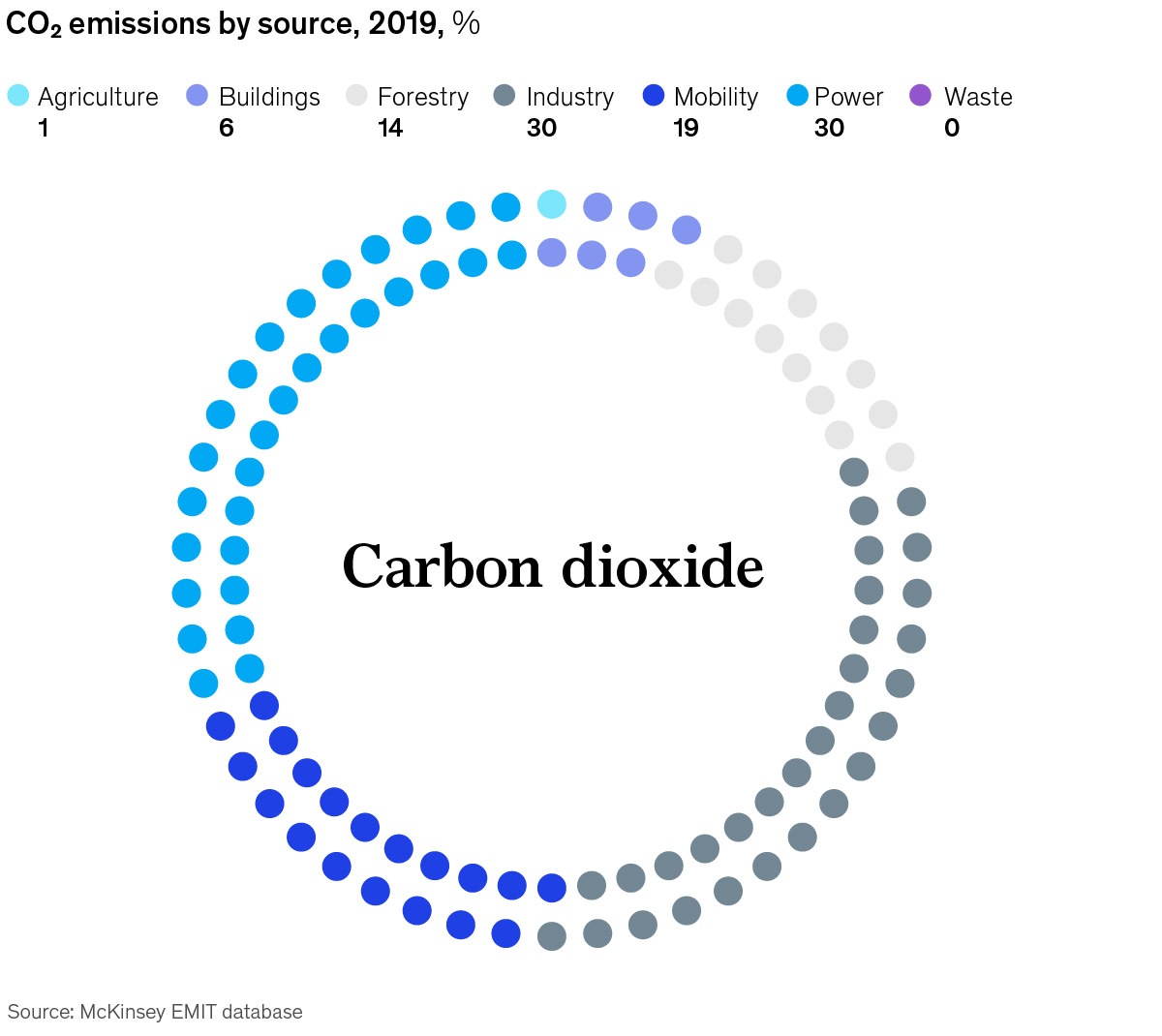
Check out our chart of the day here. 

INTERVIEW Why is digitization so hard for governments? Andy Richardson‚ chief technology officer at London‐based Public‚ discusses why digitization is so difficult for governments and why addressing that tech gap would have such an enormous impact. “The ideal digital government is data driven. It’s accountable. It’s transparent‚” Richardson said. “It brings the citizen into the reasons that decisions have been made. A brilliant digital government can really engage with its citizens.” 
MORE ON MCKINSEY.COM To improve your supply chain‚ modernize your supply chain IT | Global distribution issues and increasingly complex supply chains are forcing companies to modernize the tools they use to forecast demand and plan to meet it. How US airports could make the most of additional liquidity | Airports generate billions of dollars in direct and indirect value to the economy. While they face a challenging recovery from the pandemic‚ diversifying revenue streams and sources of funding provides a critical opportunity. The rise of the inclusive consumer | Social values are shaping purchasing decisions more than ever as shoppers vote with their wallets for retailers that support diverse entrepreneurs and products. Retailers that act now stand to attract consumers’ loyalty. 
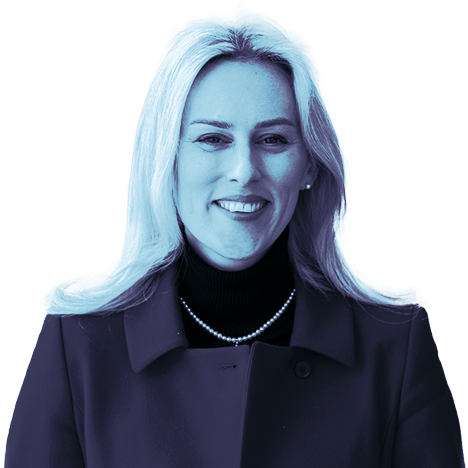
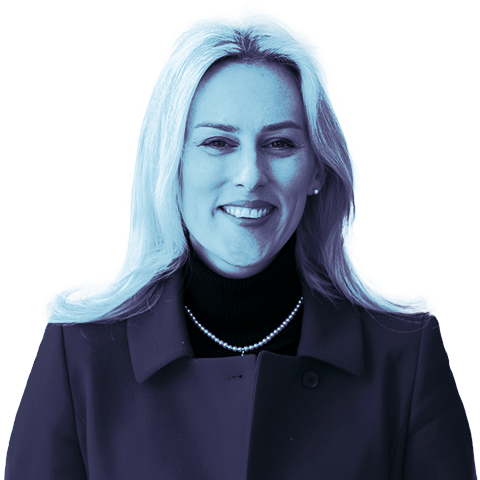
Be aware of your brain’s bias Julia Sperling-Magro Julia Sperling‐Magro‚ a medical doctor and neuroscientist‚ is a partner in McKinsey’s Frankfurt office. She focuses on performance and health transformations‚ leadership development‚ and operating-model design. If you think you will be completely objective in the decisions you make today‚ I’m here to tell you that assumption is incorrect. Your brain works by helping focus your attention. At any point in time‚ 11 million bits of information hit your brain, but only 70 get processed consciously‚ and you remember only seven properly in your short‐term memory. Because of this enormous filtering exercise‚ your brain seeks patterns that make it easier to perform. The brain loves shortcuts‚ and it loves being correct. As a result‚ when you look out into the world you’re basically reconfirming whatever theory you’ve already formed with every piece of information you pick up. And that’s just one of the many cognitive biases to which we’re prone. It is extremely difficult to remind yourself that you might be biased in the moment when you’re about to make a decision. Just being generally aware of your bias will most likely not help; you need some sort of “cue.” A business leader I know was convinced that he was right all the time. So we established a devil’s advocate process to challenge his assumptions and strengthen his decision making. The problem was it didn’t work. Why not? Because he was emotionally attached to his beliefs. He became even more convinced that he was right after someone challenged him. In the end‚ the countermeasure that worked was to create a “red team” and a “blue team.” The red team argued his opinion‚ and the blue team argued the opposite. The leader could watch them having a discussion without feeling attacked. Ultimately‚ what this leader really needed—and what all robust decisions need—is a more diverse set of perspectives throughout the process. Our affinity bias means that our teams‚ and especially leadership teams‚ are often homogenous. But we need people with different backgrounds‚ experiences‚ and ways of thinking to challenge our assumptions. I discovered during implicit‐bias testing that I am moderately biased against women in leadership. This revelation came after years of supporting and promoting women in leadership roles. So I now have my own personal cue (or nudge): a handwritten note that says‚ “Why not a woman?” I bring it with me to every meeting where I might otherwise forget to live up to the inclusion principles I feel so strongly about. Whether it’s your own note‚ or an inclusion app that reminds you not to interrupt others‚ or a trusted group that has your active permission to question your thinking‚ you need a prompt that tells you‚ “Pause and think before you react or decide.” — Edited by Barbara Tierney Share this What We’re Thinking 



BACKTALK Have feedback or other ideas? We’d love to hear from you. 
Tell us what you think 

Follow our thinking 



Share these insights Did you enjoy this newsletter? Forward it to colleagues and friends so they can subscribe too.
Was this issue forwarded to you? Sign up for it and sample our 40+ other free email subscriptions here.This email contains information about McKinsey’s research, insights, services, or events. By opening our emails or clicking on links, you agree to our use of cookies and web tracking technology. For more information on how we use and protect your information, please review our privacy policy. You received this email because you subscribed to The Shortlist newsletter. Manage subscriptions | Unsubscribe Copyright © 2022 | McKinsey & Company, 3 World Trade Center, 175 Greenwich Street, New York, NY 10007
by "McKinsey Shortlist" <publishing@email.mckinsey.com> - 02:23 - 4 Mar 2022 -
Hundreds of millions of players and billions in revenue: What’s next for gaming?
McKinsey&Company
Game on .

What’s in a game? The news • Big Tech, big audiences. The video game industry has now far surpassed the movie industry, with 2021 gaming revenues at $180 billion, more than double global box office revenues. And with games now available on various platforms, from laptops to smartphones, game creators are able to tap into ever-expanding audiences through ads, subscriptions, and lucrative in-game purchases. It’s little wonder that Big Tech is paying so much attention to the gaming industry. [FT] • Representation gap. Nearly three-quarters of Black Americans say they are gamers, versus 66% of the total population. So why aren’t there more Black video game characters and Black leads in video games? A handful of creative game studios and gaming professionals are working on expanding the representation of Black characters in the industry, which can have benefits beyond the game itself. When players—especially children—see characters who look like them in video games, it can help strengthen their sense of self and belonging. [NYT] 
“If you’re going to build products for everybody in the world, you need to represent everybody in the world.” 
Our insights • ‘To play is human.’ Humans have been playing since the dawn of time, and that play is fundamental to our humanity, Sarah Bond tells McKinsey. As Microsoft’s corporate VP for game creator experience and ecosystem at Xbox, Bond sees the gaming industry as a unique entertainment medium where people can connect with others they’ve never met—who may not even speak the same language or live in the same time zone. Gaming is a remarkable social force that enables shared achievement, all within realistic worlds that push the boundaries of tech, says Bond. • Enabling creativity. McKinsey spoke with Bond about how Microsoft’s strategic shift away from its console-centric gaming business opened up the company’s aperture to focus not just on gamers but also on game developers and publishers, too. In our interview, Bond shares some lessons from gaming that apply to many other industries—including how engagement should drive monetization instead of vice versa. And then there’s the “enormous power” of user-generated content, thanks to which nearly every year, she tells us, a new launch appears from an unknown team—and becomes one of the world’s biggest games. — Edited by Justine Jablonska Get ready to play 
Was this forwarded to you? Sign up here. Or send us feedback — we’d love to hear from you. 

Follow our thinking 


This email contains information about McKinsey’s research, insights, services, or events. By opening our emails or clicking on links, you agree to our use of cookies and web tracking technology. For more information on how we use and protect your information, please review our privacy policy. You received this email because you subscribed to the On Point newsletter. Manage subscriptions | Unsubscribe Copyright © 2022 | McKinsey & Company, 3 World Trade Center, 175 Greenwich Street, New York, NY 10007
by "McKinsey On Point" <publishing@email.mckinsey.com> - 12:47 - 4 Mar 2022 -
HR’s star is rising—here’s what 80 people leaders say could come next
the Daily read
Understand new priorities .
Share this email 



AN ARTICLE A DAY, PICKED BY OUR EDITORS 
We’ve seen a lot of unprecedented changes in the workplace in recent years—the Great Resignation being just one example. Through it all, the HR function has played a critical role, and it continues to evolve from a support function to a powerful strategic partner for leadership. In the words of one CHRO, “The pandemic showed HR is as relevant to business success as typical core functions like R&D, sales, or production.” So, what comes next? A new article looks to the future of HR, backed by insight from 80 people leaders. — Joyce Yoo, digital editor, New York 
Reimagining HR: Insights from people leaders Human resources is playing a critical role in helping organizations respond to the COVID-19 pandemic. Chief human resources officers expect that influence to persist. Understand new priorities 

Quote of the Day "A really good people analytics function combines the broad view—the broad understanding of organizational research, the broad understanding that this is a field that’s been around for a while, and we know what motivates people—and then brings that to bear to highlight individual facts." —David Green, managing partner of Insight222, on how HR leaders can use analytics to fill open roles in a recent episode of the McKinsey Talks Talent podcast 
Chart of the Day 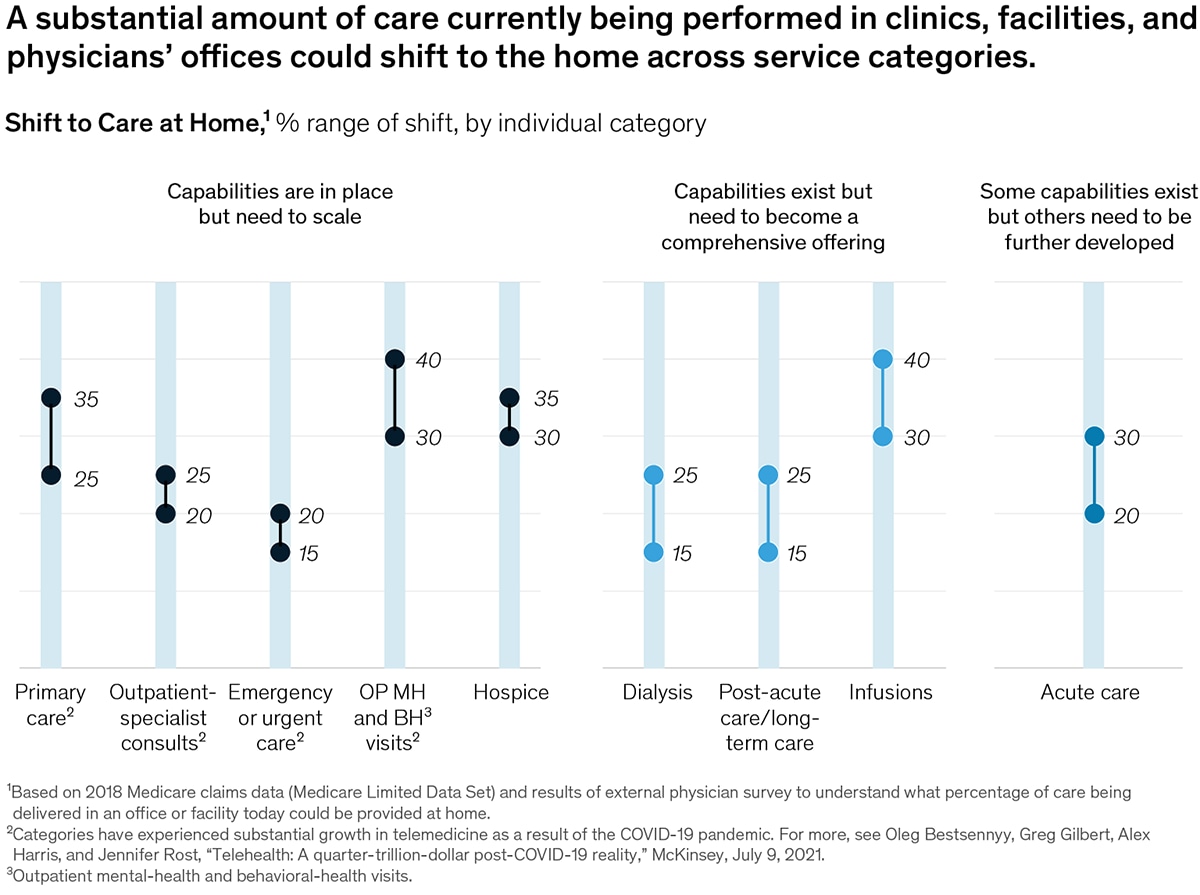
See today's chart 
Also New 

Patients love telehealth—physicians are not so sure During the pandemic, patients have said that they like telehealth, especially for behavioral-health treatment. But physicians say they are concerned about telehealth’s long-term sustainability. Understand different perspectives 


Why business must heed customer reviews COVID-19 has made e-commerce more competitive than ever. Paying attention to customer reviews will give organizations a necessary edge. Understand consumer power 


Five things to know about the Chinese logistics market heading into 2022 Insights to guide decision making for private-equity players, logistics companies, and shippers worldwide. Look to the future 


Follow our thinking 



Share these insights Did you enjoy this newsletter? Forward it to colleagues and friends so they can subscribe too.
Was this issue forwarded to you? Sign up for it and sample our 40+ other free email subscriptions here.This email contains information about McKinsey’s research, insights, services, or events. By opening our emails or clicking on links, you agree to our use of cookies and web tracking technology. For more information on how we use and protect your information, please review our privacy policy. You received this email because you subscribed to the Daily Read newsletter. Manage subscriptions | Unsubscribe Copyright © 2022 | McKinsey & Company, 3 World Trade Center, 175 Greenwich Street, New York, NY 10007
by "McKinsey Daily Read" <publishing@email.mckinsey.com> - 06:15 - 3 Mar 2022 -
This labor economist explains why companies should open the door to applicants without degrees
Intersection Subject Line
Where automation is hitting workers the hardest .
Share this email 



DELIVERING ON DIVERSITY, GENDER EQUALITY, AND INCLUSION 
McKinsey stands with Ukraine. We share with readers this statement from Bob Sternfels, McKinsey’s global managing partner, on the Russian government’s brutal and senseless invasion of Ukraine, as well as the actions that McKinsey is taking to support the Ukrainian people. 
In this issue, we look at how the US can improve the experiences of workers, why automation isn’t an immutable force, and how companies can open the door to new talent. THE VIEW 
“Many of the best jobs require a college degree up front—no negotiation, can’t be considered otherwise. I would like to see more businesses reevaluate that stricture and ask themselves if there aren’t more jobs that could be open to people without four-year college credentials to do good work and move up the ladder.”
— Economist David AutorDavid Autor is a leading American labor economist and a professor of economics at MIT. In the latest episode of the McKinsey Global Institute’s Forward Thinking podcast, he discusses how the US can provide more economic security to workers; how policies, institutions, and norms shape the distributional consequences of automation; and how employers can expand opportunity by rethinking hiring requirements. Here are four highlights from that engaged discussion. Businesses can open the door. As the MIT professor points out, far less than half the US population has a four-year college degree—and the figure is markedly lower for Black, Hispanic, and Latinx Americans. Only 38 percent of Americans aged 25 and older have a bachelor’s degree; one in five Hispanic and Latinx Americans and less than 30 percent of Black Americans have graduated from a four-year college. Dr. Autor says that businesses should open the door to more talent. The economist is not alone in calling for change. In this podcast episode, two other leading voices on the subject lay out the case for a more skills-based labor market. The US government is also setting an example. This week, the Biden administration announced that it is moving to expand skills-based hiring—and it challenged employers to do the same. There’s a bright spot at the bottom. Professor Autor observes that while many Americans are seeing nominal wage gains without seeing real wage gains, that’s not the case at the bottom of the labor market, where wage gains are outpacing inflation: “In hospitality and leisure, wages are increasing about 12 percent a year. Inflation’s running about 6 percent. So that’s a good thing.” That’s a statement that Dr. Autor declines to qualify. After all, he says, most people are workers. The economist knows very well that “businesses aren’t thrilled about this”—but he says it’s high time that real wages went up. Over the past four decades, Dr. Autor says, labor markets have gotten worse for Americans without college degrees—due in large part to automation. Most Americans without a college degree now work in service jobs—often “low-paid work, with almost no collective bargaining, and minimum wage levels that are in real terms the same as they were in 1950.” 
Automation might be inevitable—but the results of it aren’t. Dr. Autor notes that the same underlying forces have played out quite differently for workers in other industrialized countries. Advanced economies in Europe and Asia have had to contend with technological changes along with globalization and demographic challenges. “And yet, there’s a whole spectrum of outcomes that they have produced. And the US is kind of at the left-hand tail of badness of those outcomes,” in terms of median wages, job quality, job security, and workers’ living standards. One reason, according to Dr. Autor: differences in the role of unions. He explains that “in the US context, with the lack of collective bargaining and very limited efforts to hold up the floor, automation unfolded with very few checks and balances.” The bottom line, he says, is that while automation creates certain pressures, “how those play out is a function of the market forces, the institutional structures, the political economy, and even the norms.” On that note, here’s a look at what happened when Germany instituted a national minimum wage. Plus: Dr. Michael Spence on the ongoing rise in inequality, Dr. Daron Acemoglu on AI and the political economy of growth, and more from McKinsey on making growth both sustainable and inclusive. Where there’s political will, there’s a way. Professor Autor puts it plainly: “We have all the tools we need to be prosperous and to actually use the improving productivity and the growing capability of all the technologies we’re creating to raise standards of living for many, many people.” What’s needed, he says, is political will. 

Follow our thinking 



Share these insights Did you enjoy this newsletter? Forward it to colleagues and friends so they can subscribe too.
Was this issue forwarded to you? Sign up for it and sample our 40+ other free email subscriptions here.This email contains information about McKinsey’s research, insights, services, or events. By opening our emails or clicking on links, you agree to our use of cookies and web tracking technology. For more information on how we use and protect your information, please review our privacy policy. You received this email because you subscribed to the Intersection newsletter. Manage subscriptions | Unsubscribe Copyright © 2022 | McKinsey & Company, 3 World Trade Center, 175 Greenwich Street, New York, NY 10007
by "McKinsey Intersection" <publishing@email.mckinsey.com> - 01:30 - 3 Mar 2022 -
Reimagining bottles, boxes, and bins: What’s next in packaging
McKinsey&Company
Taking the lid off packaging .

Judge it by its cover The news • Plastic, that‘s a wrap. Plastic packaging may seem essential in the kitchen and for food on the go, but in fact, the world has survived without it—and can again. In ancient times, food was wrapped in leaves or husks: for instance, think of tamales bundled in corn husks. Home cooks can easily opt out, and several states and countries are enacting curbs or bans on single-use plastic. [WSJ] • Take-out packaging is the ‘new dinnerware.’ For most restaurant brands in the COVID-19 era, take-out orders make up more than half of their business. People want to experience restaurant-quality food at home: fresh, well presented, and at the right temperature. That makes designing the right take-out dinnerware more important than ever and a way to win loyal customers. [QSR Magazine] 
“Everything that the item’s package does in a traditional brick-and-mortar retail channel, it has to do in the e-commerce channel—and then some.” 
Our insights • Strong and compelling. The COVID-19-pandemic hugely accelerated e-commerce in grocery—and that “creates more demands on the package,” says Ron Delia, CEO of global packaging company Amcor. For instance, packaging must be stronger to withstand being in transit, and it must also be compelling. For consumers, now the “moment of truth” is when they open the box, not when they see the product on the shelf, Delia told McKinsey in an interview. • Lots to unpack. A world where grocery deliveries have to be wrapped up in even more packaging seems counter to sustainability missions. But there are some nuanced solutions: for instance, moving from purely virgin material to 100% recycled material, says Delia. Read the full interview to learn how companies can think through the new world of packaging. — Edited by Katy McLaughlin Unwrap solutions 
Was this forwarded to you? Sign up here. Or send us feedback — we’d love to hear from you. 

Follow our thinking 


This email contains information about McKinsey’s research, insights, services, or events. By opening our emails or clicking on links, you agree to our use of cookies and web tracking technology. For more information on how we use and protect your information, please review our privacy policy. You received this email because you subscribed to the On Point newsletter. Manage subscriptions | Unsubscribe Copyright © 2022 | McKinsey & Company, 3 World Trade Center, 175 Greenwich Street, New York, NY 10007
by "McKinsey On Point" <publishing@email.mckinsey.com> - 12:19 - 3 Mar 2022 -
How to fix the broken rung on the career ladder for women in tech
the Daily read
End inequality .
Share this email 



AN ARTICLE A DAY, PICKED BY OUR EDITORS 
Women are promoted at a slower rate than men across all industries and roles. But in technical roles‚ including in engineering and product management‚ the gender gap is even more pronounced: just 52 women for every 100 men are promoted to manager. Diversity is crucial in technical roles because it helps debias the technologies that are an intrinsic part of modern life. Early‐career promotions are critical to success‚ so this broken rung on the leadership ladder means that companies end up preparing fewer women for senior roles. What can leaders do? Don’t miss our article on repairing what’s broken. — Sarah Skinner, digital editor, New York 
Repairing the broken rung on the career ladder for women in technical roles Women in technical roles are less likely than men to win promotions early in their careers‚ and many are exiting the field. Companies can strengthen workforces and boost performance by reversing this trend. End inequality 

Quote of the Day “In general‚ you want to optimize your team with about 60 percent of your people in the sweet spot—this is the standard bell curve distribution—20 percent of your people at the launch point‚ and 20 percent of your people in mastery. In general‚ I want most of my people in the sweet spot. Then optimize based on the needs of your team right now—the stage of growth that your company is in.” —Whitney Johnson‚ CEO of Disruption Advisors‚ on her new book‚ Smart Growth: How to Grow Your People to Grow Your Company, in a recent interview from McKinsey’s Author Talks series 
Chart of the Day 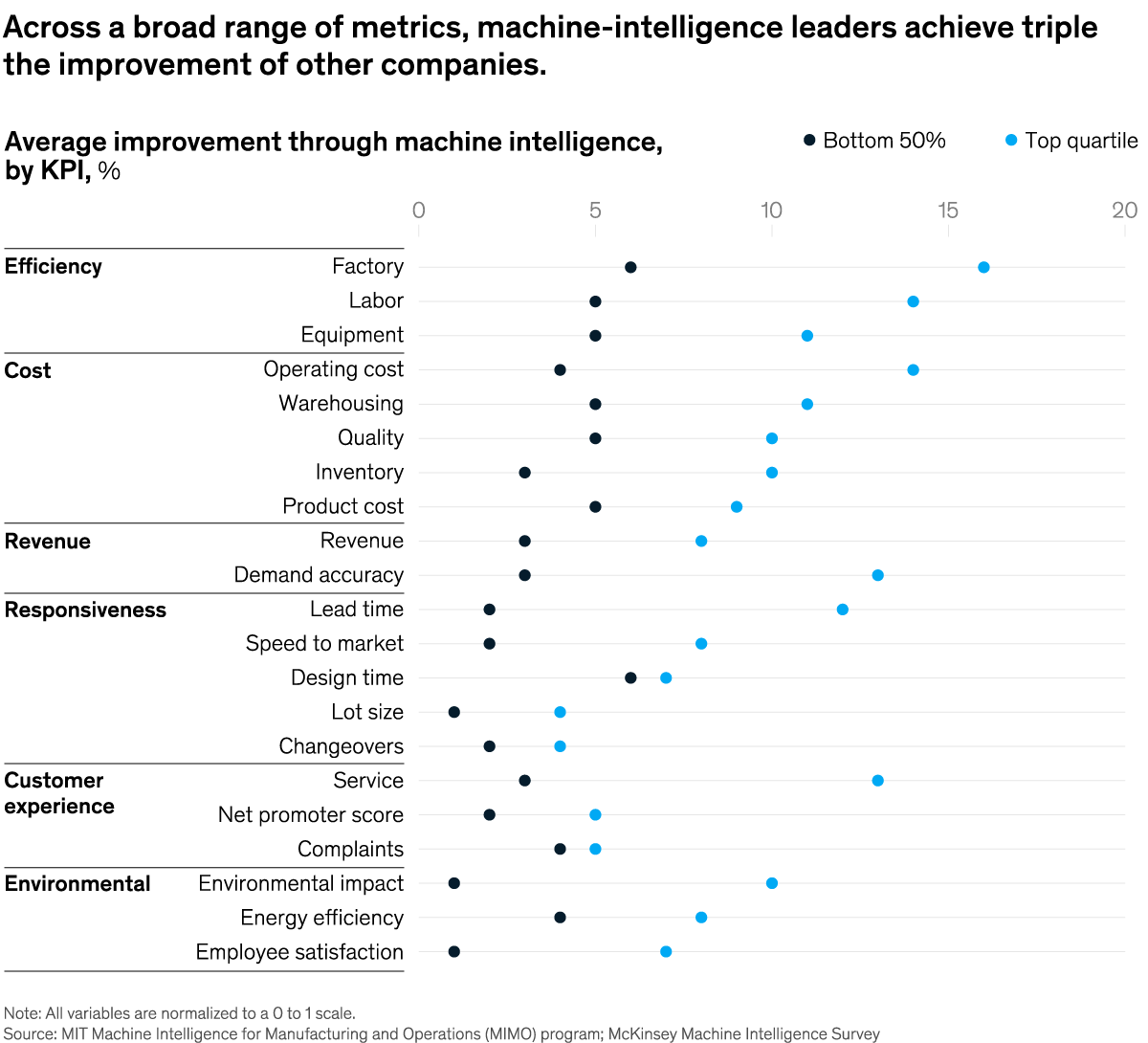
See today’s chart 
Also New 

The McKinsey Crossword: Goldilocks Zone 65 across: Face adversity bravely ... and the theme of this puzzle. Can you solve it? Play now 


How to navigate mining’s cash-flow conundrum Commodity prices in the mining industry have been on an upswing. An analysis of how the industry has managed cash flows in recent years could help leaders maximize value. Dig deeper 


The new B2B growth equation Customers want an always-on, personalized, omnichannel experience. The world’s best sellers are giving it to them. Shift share meaningfully 


Follow our thinking 



Share these insights Did you enjoy this newsletter? Forward it to colleagues and friends so they can subscribe too.
Was this issue forwarded to you? Sign up for it and sample our 40+ other free email subscriptions here.This email contains information about McKinsey’s research, insights, services, or events. By opening our emails or clicking on links, you agree to our use of cookies and web tracking technology. For more information on how we use and protect your information, please review our privacy policy. You received this email because you subscribed to the Daily Read newsletter. Manage subscriptions | Unsubscribe Copyright © 2022 | McKinsey & Company, 3 World Trade Center, 175 Greenwich Street, New York, NY 10007
by "McKinsey Daily Read" <publishing@email.mckinsey.com> - 06:14 - 2 Mar 2022 -
Re: Getting Started with Remote
MD - I'm checking in to ensure you were able to find a time to connect about your plans for using Remote. This will be the best way to ensure we address any questions you may have about adding new remote employees.Best,Neha|Neha GuptaGlobal Employment AdvisorIf you'd like me to stop sending you emails, please click hereOn Mon, Feb 28, 2022 at 4:23 pm, Neha Gupta wrote:Hi MD,I noticed you recently signed up for an account with Remote. I’m here to help ensure you have everything you need to onboard and pay your new remote hires.The easiest way to get you set-up would be to jump on a call with one of our Global Employment Specialists. On this call, we can address your questions and show you how to add an employee to your account.Thanks,Neha|Neha GuptaGlobal Employment AdvisorIf you'd like me to stop sending you emails, please click here
by "Neha Gupta" <neha@remote.com> - 11:28 - 2 Mar 2022 -
Gray hair and don’t care? Unfortunately, hiring managers do.
McKinsey&Company
What we’ve learned about ageism .

Over the hill The news • Not the same job market. For older workers, the hot job market is just lukewarm. Roughly one-third of US job seekers aged 55-plus remained unemployed for at least 27 weeks as of January, compared with about 22% of younger workers. Age discrimination is persistent. Even those who think racism and sexism are unacceptable in the workplace still hold ageist attitudes toward older employees, academic research has found. Some older workers are fighting age bias by maintaining a youthful appearance, while others highlight their mentoring skills. [WSJ] • ‘Acceptable’ ageism. “It is still perfectly acceptable in polite society to be rampantly ageist,” argues Financial Times contributing editor Lucy Kellaway. Prejudice against older people is so widespread that no one even lifts an eyebrow when assumptions are made about older workers being “bad at tech” or inflexible. In fact, one out of every two people in the world harbors ageist attitudes, according to a 2021 World Health Organization report. What’s perplexing about age discrimination is it only hurts our future selves, Kellaway asserts. [FT] 
“Many of the age-45-plus people are automatically getting screened out because they’re not fitting the type or they’re not fitting the algorithm that’s currently being used.” 
Our insights • ‘Ageism is real.’ “[Ageism] is global, whether you are an emerging market or you are an OECD country,” says Mona Mourshed, CEO of Generation, a nonprofit that provides free job training. Generation’s 2021 report found that workers aged 45-plus face an uphill battle toward employment—and that was true for all countries surveyed. In fact, 63% of midcareer workers were unemployed for over a year, compared with 36% of workers aged 18 to 34. But even though bias against older workers is widespread, only about 50% of companies include age as part of their diversity, equity, and inclusion strategy, Mourshed added. • A striking finding. One of the most striking findings from the report was that even though hiring managers think that older workers perform well on the job, they are also much less likely to extend an offer to older candidates. Recruiters consistently rated only about 15 to 18% of workers aged 45-plus a fit for the role they were hiring for. Yet when asked about the performance of older workers who were already on staff, HR leaders said that nearly 90% performed as well or better than their younger peers, says Mourshed. To learn what employers can do to hire, retain, and retrain older workers, read the full interview. — Edited by Belinda Yu Level the playing field 
Was this forwarded to you? Sign up here. Or send us feedback — we’d love to hear from you. 

Follow our thinking 


This email contains information about McKinsey’s research, insights, services, or events. By opening our emails or clicking on links, you agree to our use of cookies and web tracking technology. For more information on how we use and protect your information, please review our privacy policy. You received this email because you subscribed to the On Point newsletter. Manage subscriptions | Unsubscribe Copyright © 2022 | McKinsey & Company, 3 World Trade Center, 175 Greenwich Street, New York, NY 10007
by "McKinsey On Point" <publishing@email.mckinsey.com> - 12:19 - 2 Mar 2022

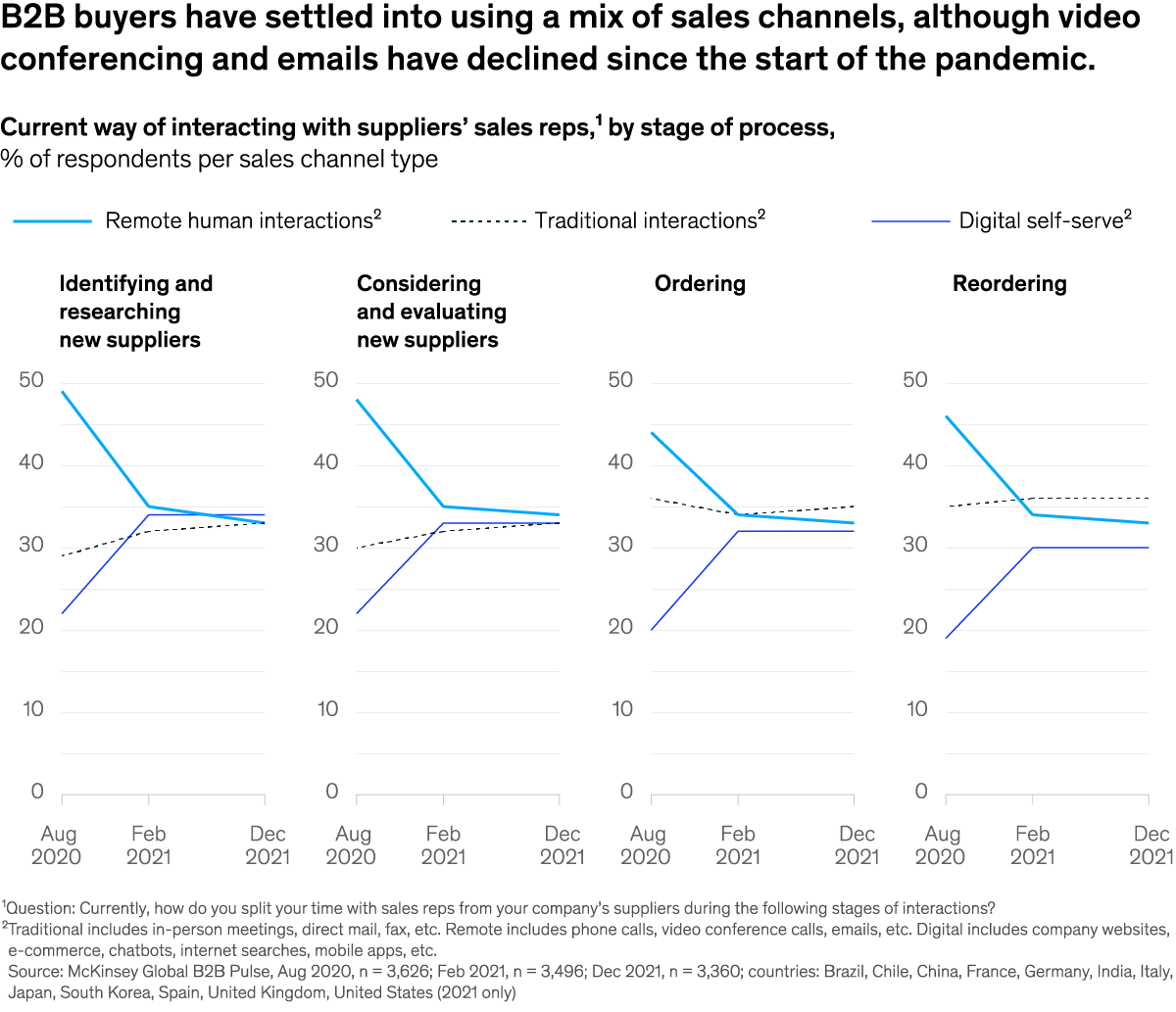


.png?width=1200&upscale=true&name=Hero-1%20(1).png)
